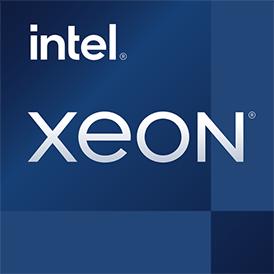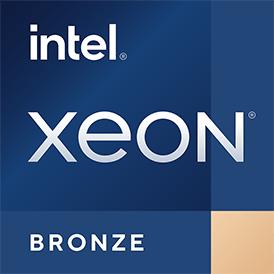 Geekbench 3, 64bit (Multi-Core)
Geekbench 3, 64bit (Multi-Core)
|
|
Intel Xeon E5-2650 v3
10C 20T @ 2.3 GHz
|
29380
|
|
|
Intel Xeon Bronze 3106
8C 8T @ 1.7 GHz
|
11397
|
 Estimated results for PassMark CPU Mark
Estimated results for PassMark CPU Mark
|
|
Intel Xeon E5-2650 v3
10C 20T @ 2.3 GHz
|
12021
|
|
|
Intel Xeon Bronze 3106
8C 8T @ 1.7 GHz
|
5766
|
 Geekbench 5, 64bit (Multi-Core)
Geekbench 5, 64bit (Multi-Core)
|
|
Intel Xeon E5-2650 v3
10C 20T @ 2.3 GHz
|
6354
|
|
|
Intel Xeon Bronze 3106
8C 8T @ 1.7 GHz
|
3389
|
 Geekbench 6 (Multi-Core)
Geekbench 6 (Multi-Core)
|
|
Intel Xeon E5-2650 v3
10C 20T @ 2.3 GHz
|
6066
|
|
|
Intel Xeon Bronze 3106
8C 8T @ 1.7 GHz
|
3082
|
 Geekbench 3, 64bit (Single-Core)
Geekbench 3, 64bit (Single-Core)
|
|
Intel Xeon E5-2650 v3
10C 20T @ 2.3 GHz
|
3117
|
|
|
Intel Xeon Bronze 3106
8C 8T @ 1.7 GHz
|
1916
|
 Cinebench R15 (Multi-Core)
Cinebench R15 (Multi-Core)
|
|
Intel Xeon E5-2650 v3
10C 20T @ 2.3 GHz
|
1381
|
|
|
Intel Xeon Bronze 3106
8C 8T @ 1.7 GHz
|
575
|
 Geekbench 6 (Single-Core)
Geekbench 6 (Single-Core)
|
|
Intel Xeon E5-2650 v3
10C 20T @ 2.3 GHz
|
1022
|
|
|
Intel Xeon Bronze 3106
8C 8T @ 1.7 GHz
|
561
|
 Geekbench 5, 64bit (Single-Core)
Geekbench 5, 64bit (Single-Core)
|
|
Intel Xeon E5-2650 v3
10C 20T @ 2.3 GHz
|
805
|
|
|
Intel Xeon Bronze 3106
8C 8T @ 1.7 GHz
|
486
|
 Cinebench R15 (Single-Core)
Cinebench R15 (Single-Core)
|
|
Intel Xeon E5-2650 v3
10C 20T @ 2.3 GHz
|
115
|
|
|
Intel Xeon Bronze 3106
8C 8T @ 1.7 GHz
|
75
|
 Cinebench R11.5, 64bit (Multi-Core)
Cinebench R11.5, 64bit (Multi-Core)
|
|
Intel Xeon E5-2650 v3
10C 20T @ 2.3 GHz
|
14.1
|
|
|
Intel Xeon Bronze 3106
8C 8T @ 1.7 GHz
|
6.1
|
 Cinebench R11.5, 64bit (Single-Core)
Cinebench R11.5, 64bit (Single-Core)
|
|
Intel Xeon E5-2650 v3
10C 20T @ 2.3 GHz
|
1.4
|
|
|
Intel Xeon Bronze 3106
8C 8T @ 1.7 GHz
|
0.9
|

